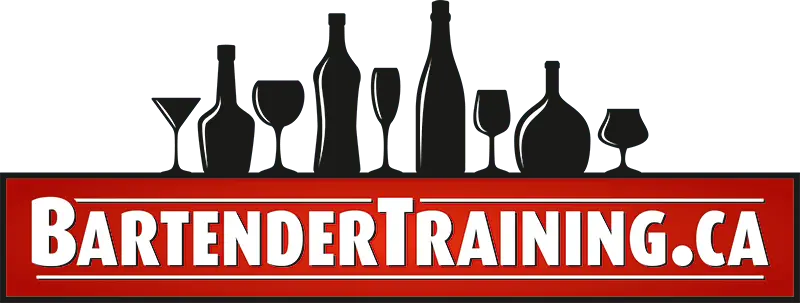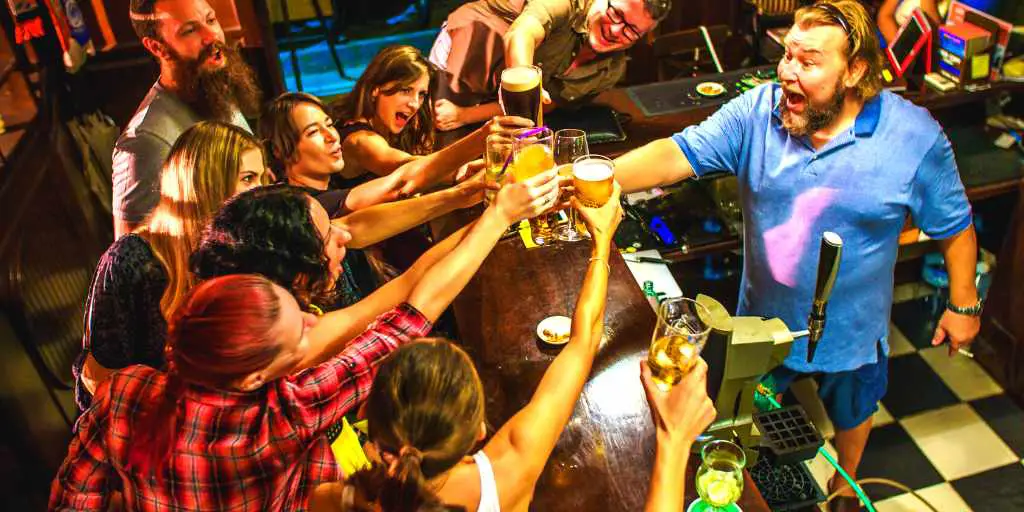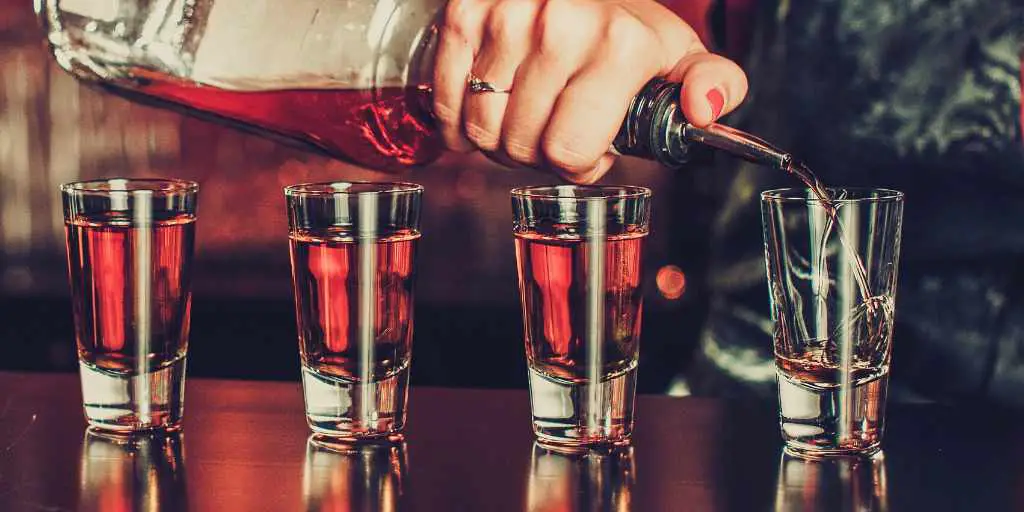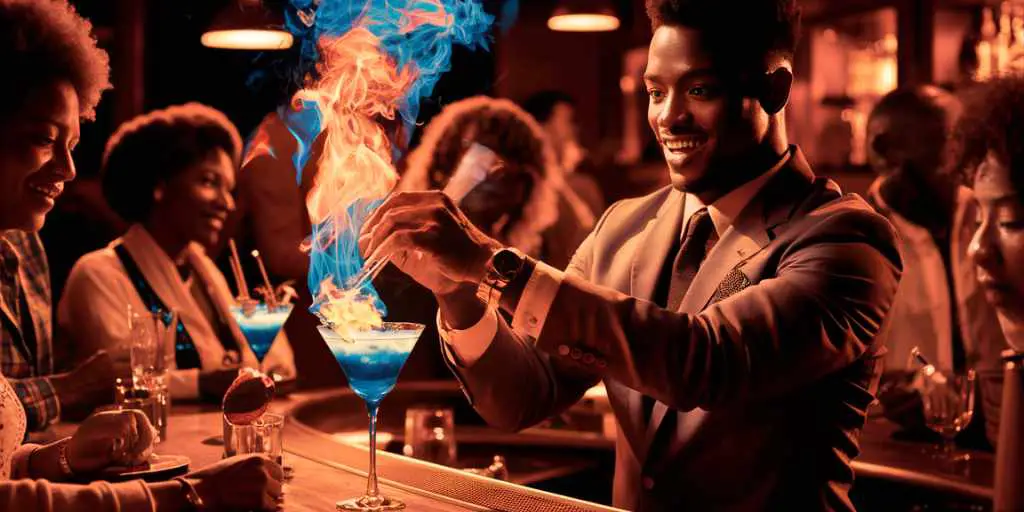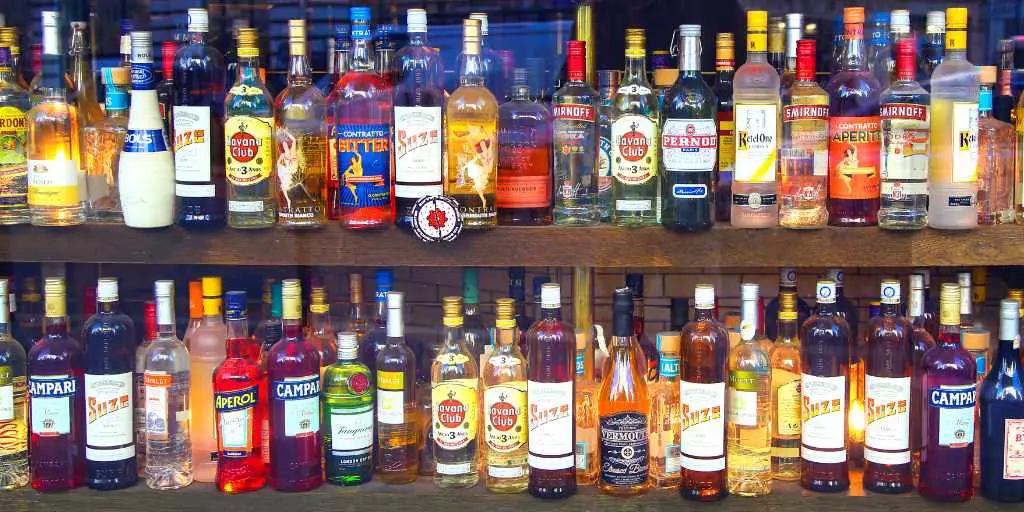Imagine yourself in a bustling bar, the atmosphere is electric, and you’re ready to order a drink. But do you know the difference between a “dirty martini” and a “burnt martini”? Or the right way to order a “neat” whiskey? Understanding bar lingo can elevate your experience, making you feel like a connoisseur and ensuring you get the desired drink. For bartenders, fluency in bar terminology is crucial for efficient communication and for creating a memorable experience for patrons. Let’s dive into the world of bar lingo and learn the essential terms and phrases that will make you feel right at home in any bar setting.
Short Summary
- Master essential bar lingo for bartenders and patrons.
- Understand techniques, tools, flavours & textures to craft the perfect drink.
- Follow proper etiquette and appreciate how terminology has evolved over time.
Mastering Bar Lingo: Essential Terms for Bartenders and Patrons
Bar lingo is a language that bartenders and patrons should be familiar with to ensure smooth communication and a satisfying experience. From understanding the ingredients in popular mixed drinks like lime juice in a margarita to knowing the difference between a tall glass and a rocks glass, mastering bar lingo is a skill that comes with practice and experience.
By being well-versed in bar terminology, you can exude a sense of coolness and confidence while ordering drinks and avoid any confusion resulting from using inappropriate terms, such as requesting olive juice or lemon juice when it’s not required.
Behind the Stick: Key Phrases for Bartenders
Bartenders use a variety of key phrases and terms to navigate the fast-paced bar environment. One such term is “behind the stick,” which refers to being behind the bar and working as a bartender. Other common terms include “86” (when an item is out of stock or a customer is cut off from ordering more drinks), “boomerang” (a drink sent back by a customer), and “in the weeds” (when a bartender is overwhelmed with orders). Familiarizing yourself with these terms can help you better understand the actions of bartenders and feel more comfortable in a bar setting.
The distinction between shaken and stirred cocktails is crucial to know as a bartender. Shaken cocktails are prepared by combining ingredients in a shaker, vigorously shaking it, and then straining the mixture into a glass. On the other hand, stirred cocktails are made with more finesse and are typically preferred for drinks containing distilled spirits or light mixers, such as a stiff drink. By understanding the nuances of these techniques, bartenders can better cater to the preferences of their patrons and create perfectly crafted cocktails.
Drinks Served: Popular Mixed Drink Names and Ingredients
Popular mixed drinks, including alcoholic mixed drink options, each have unique names and ingredients, making ordering and serving them an intricate process. A cocktail is a combination of liquor mixed with soda or juice, typically shaken prior to serving and enjoyed in various types of glassware, including beer mugs. Some popular mixed drinks, such as a mojito, contain fruit juice as a key ingredient, which adds a refreshing twist to the beverage.
Chasers are another essential component of mixed drinks, often served alongside shots of liquor like tequila. A chaser can be a non-alcoholic beverage or a complementary flavour, such as pickle juice, that is consumed immediately after the shot to enhance the overall experience. By identifying and recommending the appropriate chasers, bartenders can help patrons enjoy their drinks to the fullest.
Straight Liquor and Stiff Drinks: Understanding Alcohol Strength
Alcohol strength is a measure of the amount of alcohol in an alcoholic drink, expressed in terms of “proof,” which is twice the percentage of alcohol by volume. Drinks with higher alcohol content are typically referred to as “straight liquor” and “stiff drinks”. Base liquors such as gin, vodka, whiskey, tequila, rum, and brandy, as well as liqueurs like amaretto, Kahlua, Campari, and Baileys, are common forms of alcohol used in many cocktails and mixed drinks.
Understanding the distinctions between drinks served neat, straight up, and up is crucial for both bartenders and patrons. A neat drink is one that is consumed without a mixer or ice, typically served straight from the bottle. A straight-up drink is one that has been stirred in a shaker and strained into a glass, while an up drink is served cold due to the use of a chilled glass. Knowing these terms can ensure that you order or serve the correct drink tailored to individual preferences.
The Art of Mixing Cocktails: Techniques and Tools
Mixology, or the art of mixing cocktails, is a skill that combines knowledge of ingredients, techniques, and tools to invent, prepare, and serve cocktails. Passionate bartenders can create balanced and flavorful drinks by mastering various techniques such as shaking, stirring, muddling, and straining, as well as using tools like shakers, jiggers, muddlers, and strainers.
Bitters are an essential ingredient in many cocktails, as they are an alcoholic infusion of herbs that can enhance the flavour of a drink. They are often used sparingly, with just a few drops added to a cocktail to achieve the desired taste, similar to the use of lemon or lime juice.
A bar spoon, another essential tool, is a long-handled spoon designed for mixing and serving beverages, allowing bartenders to reach the bottom of a tall tumbler or jug to mix ingredients.
Mix Drinks: Combining Flavors and Textures
The process of mixing drinks involves combining distinct flavours and textures to create a harmonious and enjoyable beverage. Maintaining balance in your cocktail is essential, as it ensures that the drink is neither too potent nor too weak. The procedure for constructing a beverage typically involves incorporating ice into a glass, followed by adding a spirit and mixer, such as lime juice in a margarita.
An important aspect of mixing drinks is understanding how to bruise a cocktail. Cocktails and martinis are normally shaken before serving. However, if they are over-shaken, the ice shavings and oxygen bubbles created make the drink appear cloudy. Knowing the appropriate shaking technique and duration for each drink is essential to avoid bruising a cocktail.
Non-Alcoholic Drinks: Crafting Tasty Mocktails
For those who prefer a non-alcoholic alternative, mocktails offer a sophisticated and enjoyable option. Cocktails are non-alcoholic cocktails that incorporate various flavorful ingredients, such as fruit or citrus juices, syrups, herbs, spices, and fruits, to create an exquisite flavour combination. By using techniques such as muddling, blending, and shaking, bartenders can craft delectable mocktails that cater to a broad range of tastes.
Presentation is crucial for mocktails, as the drink’s visual appeal can enhance the overall experience. Garnishes and decorations can be used to elevate the presentation, making the mocktail not only delicious but also visually stunning. By mastering the art of crafting tasty mocktails, bartenders can cater to patrons who prefer a non-alcoholic alternative, ensuring everyone can enjoy a refreshing and satisfying beverage.
Glassware Guide: Matching Drinks with the Right Vessels
Selecting the appropriate glassware for a drink is essential, as it can impact both presentation and the overall drinking experience. Common types of glassware used in bars include martini glasses, highball glasses, shot glasses, old-fashioned glasses, double old-fashioned glasses, rocks glasses, coupe glasses, Nick & Nora glasses, and wine glasses. Each type of glassware is designed to optimize the presentation and consumption of a specific beverage, such as a martini being served in a martini glass, a shot of liquor in a shot glass, or a tall drink with plenty of ice being served in a highball glass.
Knowing which glassware to use for each drink not only ensures proper presentation but also helps bartenders work more efficiently, as they can easily select the right vessel for each cocktail. Additionally, using the correct glassware can enhance the overall atmosphere of the bar, as patrons appreciate the attention to detail in both drink preparation and presentation.
Bar Etiquette: Tips for Bartenders and Customers
Bar etiquette is essential for maintaining a positive and enjoyable atmosphere in a bar setting. For bartenders, this means keeping a clean and orderly bar area, being patient and courteous when interacting with customers, and engaging in conversation with patrons. On the other hand, customers should demonstrate respect for the bartenders and other customers, be patient when placing drink orders, and provide an appropriate gratuity.
Additionally, customers should be mindful of their environment and avoid any disruptive behaviour that could negatively impact the experience of others. By adhering to proper bar etiquette, both bartenders and customers can contribute to a welcoming and enjoyable atmosphere in the bar. This not only ensures a pleasant experience for all patrons but also fosters a sense of camaraderie and community in the establishment.
The Evolution of Bar Lingo: How Terminology Has Changed Over Time
The origins of bar lingo can be traced back to the late 19th century, and over time, it has evolved to include new terms and phrases, as well as alterations in usage and context. This evolution has seen the introduction of terms like “on the rocks” and “neat,” which have become staples in modern bar lingo.
Bar lingo has also adapted to include slang and colloquialisms, which can vary depending on the area or culture. This constant evolution of terminology reflects the ever-changing world of bartending and the ongoing development of the industry.
As bars continue to innovate and adapt to new trends, so too will the language used by those who work and frequent them.
Summary
In conclusion, mastering bar lingo is crucial for both bartenders and patrons to ensure a smooth and enjoyable experience in any bar setting. From understanding key phrases and terms used by bartenders, to knowing the ingredients and techniques involved in mixing cocktails, a strong foundation in bar lingo can greatly enhance one’s appreciation for the art of bartending. With the ever-evolving nature of bar terminology, staying up-to-date with the latest trends and developments in the industry is essential, allowing you to navigate the world of bars and cocktails with confidence and ease.
So the next time you find yourself in a bustling bar, let your knowledge of bar lingo guide you to the perfect drink, and remember that the language of bartending is as diverse and dynamic as the cocktails themselves.
Frequently Asked Questions
What is a well in bar terminology?
A well drink in bar terminology is an alcoholic beverage made with lower-cost liquors stored in easy reach of the bartender’s counter, usually known as the speed rail, speed rack or well.
Well drinks are popular among patrons as they typically cost less than call drinks.
What are drink terms?
Drink terms are specialized words used to describe different drinks, their ingredients and preparation. These include cocktail names, wine terms, and beer style descriptors, among many others. Knowing the terms associated with a drink can help make ordering and serving them more efficient and enjoyable.
It can also help to understand the flavor profiles of different drinks and the history and culture associated with them. This knowledge can help to make conversations about drinks more enjoyable.
What is perfect in bartender terms?
In bartender terms, a “perfect” drink is one that has equal parts of both sweet and dry vermouth added to the other ingredients. This creates an exquisite balance between two distinct flavours for a unique and satisfying cocktail experience.
What do you call a chaser at a bar?
A professional bartender will often refer to a chaser as a ‘back’ – it’s a drink that is meant to be consumed following a type of liquor, typically in order to soften the taste or effect.
It is an important part of the drinking experience, as it can help balance out the flavour of the liquor and make it more enjoyable.
What does served up mean?
When ordering a drink “served up”, you are essentially requesting that the drink be chilled. The bartender will use ice to chill the drink but will then remove it prior to serving. This ensures your drink is cooled without watering it down with melting ice cubes.
Ultimately, served up means a chilled, ice-free beverage.
